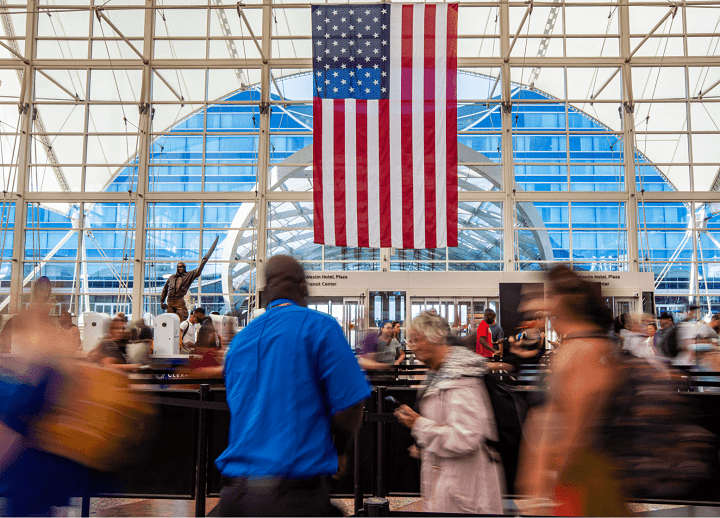Airport security is a crucial aspect of air travel, ensuring the safety of passengers and crew. However, long security wait times can be frustrating and stressful for travelers, leading to missed flights and unnecessary anxiety. In this comprehensive guide, we will delve into the intricacies of airport security, focusing on the TSA’s (Transportation Security Administration) security procedures, common causes of delays, and effective strategies to minimize wait times while maintaining stringent security standards.
Understanding TSA Security Procedures:

The TSA is responsible for ensuring the safety of passengers and preventing prohibited items from being carried onto aircraft. To achieve this, they employ various security measures, including:
- Document Check: This is the initial stage of the security process where passengers’ travel documents, such as boarding passes and identification, are checked to verify their identity and eligibility to travel.
- Security Screening: Following document check, passengers proceed to security screening, which involves the inspection of both carry-on luggage and individuals. This includes passing through metal detectors or full-body scanners and having carry-on items scanned by X-ray machines.
- Physical Inspection: In some cases, passengers may be subjected to additional physical inspections if the security screening equipment detects any anomalies or if they trigger the alarm during the metal detector scan.
Common Causes of Security Wait Times:
Several factors contribute to delays in airport security lines, including:
- Peak Travel Times: Security lines tend to be longer during peak travel times, such as holidays and weekends, as more passengers are passing through airports.
- Staffing Levels: Insufficient staffing can result in slower processing times at security checkpoints, leading to longer wait times for passengers.
- Unprepared Passengers: Individuals who are unfamiliar with security procedures or fail to prepare for screening (e.g., removing liquids and electronics from carry-on bags) can cause delays for themselves and others.
- Technical Issues: Malfunctions or breakdowns of security screening equipment can lead to delays as staff work to resolve the issue or implement alternative screening methods.
- Security Threats: Heightened security measures in response to specific threats or incidents may result in increased wait times as TSA agents implement additional screening procedures.
Strategies to Minimize Security Wait Times:
While some factors contributing to security wait times are beyond passengers’ control, there are several strategies they can employ to expedite the process:
- Arrive Early: Allow ample time to navigate through security by arriving at the airport well in advance of your scheduled departure time, especially during peak travel periods.
- Check TSA Wait Times: Utilize online resources or mobile apps that provide real-time updates on TSA wait times at specific airports, allowing you to choose the most efficient security checkpoint.
- Prepare in Advance: Familiarize yourself with TSA regulations regarding carry-on items and security procedures to ensure a smooth screening experience. This includes packing liquids, gels, and aerosols in compliance with the 3-1-1 rule and removing laptops and large electronics from bags for separate screening.
- Use TSA PreCheck or Global Entry: Expedited screening programs such as TSA PreCheck and Global Entry can significantly reduce wait times by allowing pre-approved travelers to access dedicated security lanes with fewer requirements, such as removing shoes and belts or taking laptops out of bags.
- Consider CLEAR: CLEAR is a biometric screening program available at select airports that allows members to bypass the standard security queue by verifying their identity using fingerprint or iris scans, further expediting the process.
- Choose Less Busy Times: Whenever possible, opt to travel during off-peak hours when airport crowds and security lines are typically smaller, resulting in shorter wait times.
Navigating through airport security can be a daunting task, especially during peak travel periods when long wait times are common. However, by understanding TSA security procedures, identifying common causes of delays, and implementing effective strategies to minimize wait times, travelers can streamline the security process and enjoy a smoother airport experience. Whether it’s arriving early, utilizing expedited screening programs, or choosing less busy times to travel, proactive planning and preparation can go a long way in reducing stress and ensuring a hassle-free journey.


